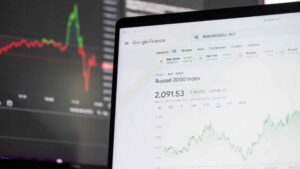Gold has experienced high volatility after news emerged that the US will impose tariffs on gold bars imported from Switzerland, causing gold price to rise sharply near record highs. However, the gains were short-lived as exemptions were announced, along with easing geopolitical tensions.
Tariffs Spark Gold Surge
Reports indicated that the US plans to impose tariffs on one-kilo and 100 troy ounce gold bars imported from Switzerland. The Custom and Border Protection agency said these gold bars should be classified under a customs code that is subject to tariffs. The decision is opposite to the expectations of exemptions. On Friday, December Comex Gold futures surged to a record intraday high of $3,534 after the news. ⁽¹⁾
The tariff rate on Switzerland was previously set at 31% in April and has now been increased to 39%, posing a threat to disrupting Switzerland’s gold exports. Switzerland is the world’s largest gold refining hub, and from June 2024, it has exported $61.5 billion worth of gold to the US, making gold its second largest export to the US after pharmaceuticals. ⁽²⁾
However, gold later pared its gains after reports indicated that the Trump administration planned to issue an executive order clarifying that gold bars would not face tariffs. US President Donald Trump also announced last Friday that he will meet with Russian President Vladimir Putin on August 15 in Alaska to negotiate an end to the war in Ukraine, a move that could potentially prevent further US sanctions on Moscow. ⁽³⁾
Broader Economic and Geopolitical Drivers
Gold’s historic 27% rally in 2025 has been fueled by these 3 factors:
- Tariffs: Since Liberation Day, spot gold rose significantly, almost reaching $3,500 amid rising uncertainty and expectations of weak global growth. The unexpected classification of gold bars disrupted previous expectations, contributing to price increase.
- Geopolitical Tensions: Tensions between the US and its rivals – China (trade tensions and Taiwan) and Russia (sanctions and Ukraine war) – along with approaching tariff deadlines, have boosted safe-haven demand.
- Economic Uncertainty: Signs of weak economic data in the US, especially the recent weak July NFP report and persistent inflation, have raised concerns of stagflation.
Global Trade Challenges
The imposed tariffs on gold could become a serious threat to the global gold market, as it relies on a trade flow between London, Switzerland and New York. The US Customs and Border Protection ruling has surprised traders, as it initially indicated that gold bars would be exempt from Trump’s tariffs but later contradicted that statement. ⁽⁴⁾
Relations between Washington and Bern have deteriorated after the US last week announced a 39 percent tariff on imports from the country. Customs data shows that Gold is one of Switzerland’s major exports to the US. ⁽⁵⁾
Potential Stabilization and Market Outlook
A White House official stated that President Trump will soon issue an executive order clarifying which tariffs apply to imports of gold bars, following Customs and Border Protection’s determination that they are subject to high levies. ⁽⁶⁾
Financial markets remain bullish on gold, as uncertainties persist due to Trump’s tariff policies, geopolitical tensions, and weak economic data. While US tariffs on imported gold bars from Switzerland continue to cause market volatility, the expected executive order could provide stability to the gold market. ⁽⁷⁾



